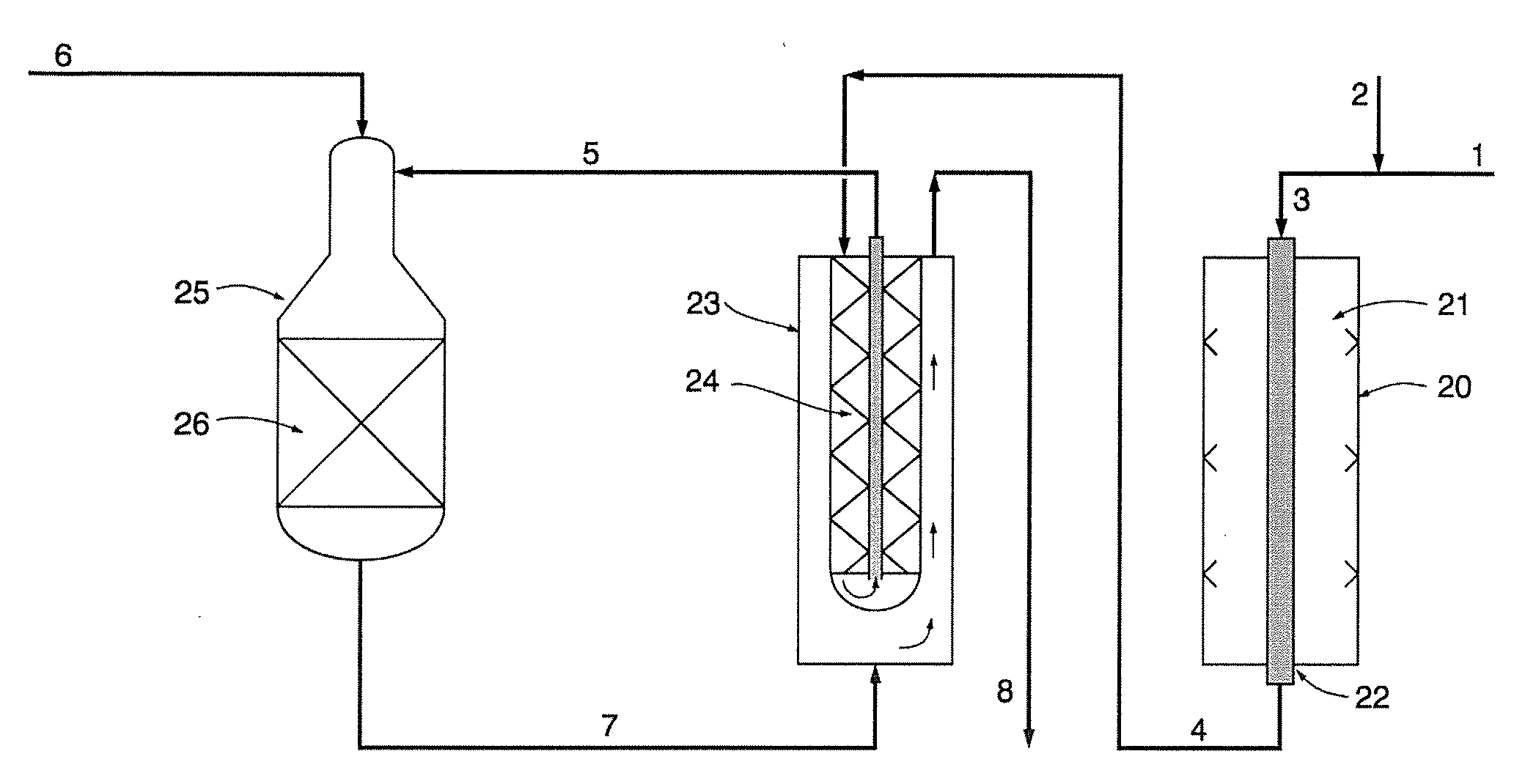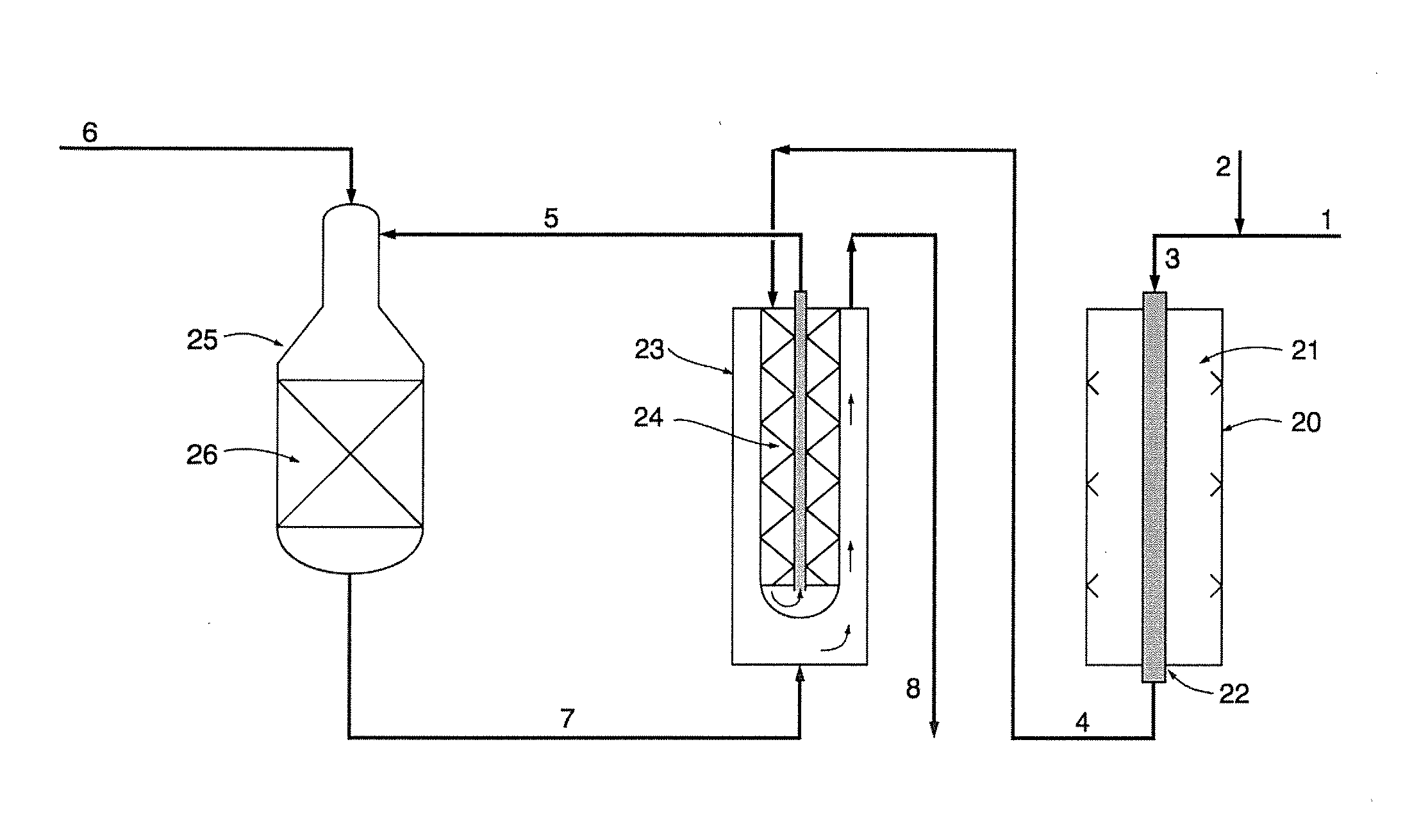Process for reforming hydrocarbons
a hydrocarbon and catalyst technology, applied in the field of gas rich production process, can solve the problem of metal parts falling within the prohibitive range of metal dusting temperature, and achieve the effect of increasing the propensity for reforming catalys
- Summary
- Abstract
- Description
- Claims
- Application Information
AI Technical Summary
Benefits of technology
Problems solved by technology
Method used
Image
Examples
example
Example 1
[0030]Table 1 shows the wall temperatures of a 9 m long catalyst tube of the bayonet type containing an inner tube, outer tube and sleeve as described above in a heat exchange reformer treating 209000 Nm3 / h of process gas from the radiant furnace and operating at about 35 bar g for a process according to a layout as depicted in the accompanying FIGURE. The S / C-ratio in the hydrocarbon mixture-steam entering the radiant furnace is 2.5 and process air with 21 vol % oxygen is injected to the ATR. The outlet temperature of the gas from the radiant furnace is 750° C. and the temperature of the effluent gas from the ATR is 1027° C. At the bottom of the catalyst tube, the wall temperature is 949° C. and as the synthesis gas from the ATR cools on its passage through the heat exchange reformer the wall temperature of the catalyst tube decreases. At the top of the tube, where the synthesis gas leaves the heat exchange reactor, the synthesis gas temperature has decreased to 776° C., w...
PUM
 Login to View More
Login to View More Abstract
Description
Claims
Application Information
 Login to View More
Login to View More - R&D
- Intellectual Property
- Life Sciences
- Materials
- Tech Scout
- Unparalleled Data Quality
- Higher Quality Content
- 60% Fewer Hallucinations
Browse by: Latest US Patents, China's latest patents, Technical Efficacy Thesaurus, Application Domain, Technology Topic, Popular Technical Reports.
© 2025 PatSnap. All rights reserved.Legal|Privacy policy|Modern Slavery Act Transparency Statement|Sitemap|About US| Contact US: help@patsnap.com


